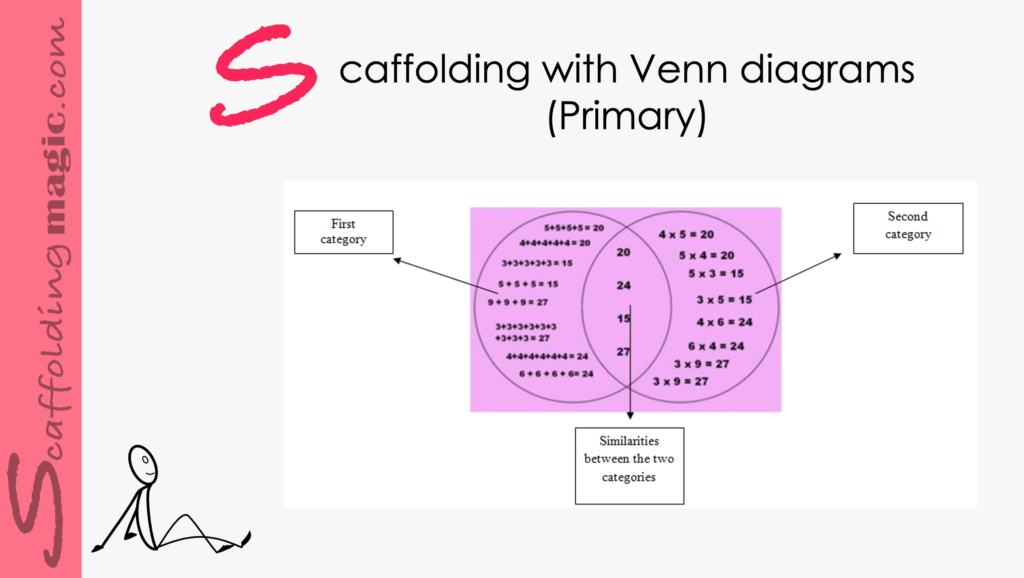You caught a beauty!!!
Download PDF of scaffold here.
Creating and using concept maps tends to have a high positive impact on student achievement.* Concept maps (graphic organisers) help students to see how various pieces of knowledge relate to one another. It helps structure their thinking. ** Venn diagrams are one type of graphic organiser that illustrate similarities, differences, and relationships between concepts, ideas, categories, or groups. This scaffold t……………………………………………………………………………to create activities for students that help them pull on past knowledge to move into new knowledge – and to become more independent learners.
………………………………………………………. students will discover for themselves the connection between t……………………………………………… In this way, learning will go deeper and be more meaningful for them in the long term.
step by step
- Divide information from a unit you’re about to begin three ways in the 2-circle overlapping Venn Diagram. (Template here.)

- Make copies for every pair of students.
- Project/show the academic language **** necessary for students to be able to speak about the information effectively, and make sure they u……………………………………………………
Example: Bricks: multiply, add, common denominator, etc.
Mortar: plus, equals, right, left, middle, times, same as, etc.
Student 1: ……………………………….
Student 2: ……………………………….
Student 1: ……………………………….
Student 2: ……………………………….
- In pairs, students analyse the Venn Diagram, verbalise ……………………………………conclusions.
- Pairs share their conclusions with the rest of the class.
- Formative Assessment:
- a) Give each pair of students addition problems that don’t appear in the Venn Diagram) and have them write the multiplication equation for each.
- b) Give each pair of students blank Venn Diagrams and they fill them in ………………………………..and the solutions in the centre.
- Reflection: Students ………………………………………. to trust them to be able to work out this connection with their partner instead of being taught it directly.
**** We use Jeff Zwiers’ concept of ‘bricks and mortar’ in identifying academic language, here. For more on this concept, you can read his article here.
Other Graphic Organisers to use in different scaffolds:
Education Place
The Cycle: Circular Flow Charts
Scholastic
* (Hattie, 2012)
** (Mehisto, 2017)
*** You’ll see that we’ll need to give our students the academic language necessary to be able to talk about the concepts in the diagrams.


Scaffoldingmagic.com is your entryway into DYNAMIC bilingual learning methodologies, such as Phenomenon-Based Learning, CLIL, EMI, and ESL. You’ll find ways to implement critical thinking tools (DOK) to promote higher level thinking, the growth mindset, instill an ethic of excellence, deep reflection on learning, and all through multi-cultural, interdisciplinary activities. We have the keys to turning competences into action and to creating collective efficacy in your school so you move ahead as a unified, enthusiastic team.


Scaffoldingmagic.com is your entryway into DYNAMIC bilingual learning methodologies, such as Phenomenon-Based Learning, CLIL, EMI, and ESL. You’ll find ways to implement critical thinking tools (DOK) to promote higher level thinking, the growth mindset, instill an ethic of excellence, deep reflection on learning, and all through multi-cultural, interdisciplinary activities. We have the keys to turning competences into action and to creating collective efficacy in your school so you move ahead as a unified, enthusiastic team.



